The game of Five Stones is also known as Knucklebones. It’s a time-honored game that was played in ancient Greece, Rome and even earlier. Nowadays, in the US it’s played with jacks. In some parts of the world it’s played with 5 flat stones or pebbles. In other places, it’s played with the ankle or knee bones of sheep or goats (see pic below). In Italy, it’s sometimes played with dried out peach pits.
The bones from the game have been found in ancient archaeological digs. You can also find images of people playing the game in ancient art. It’s interesting to note that the same bones were used like dice. In some places they’ve been used as good luck objects.
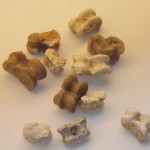
Knucklebones is a game of skill and coordination. You start by throwing the five stones or bones on a flat surface. Then you take one, toss it up in the air, and while that stone is in the air you grab another. The game continues like this with the feats becoming more and more complicated. We recently posted one set of rules to Five Stones and Knucklebones. That’s how it’s played in Italy and many other countries.
In some countries there are mysterious chants that are said while playing. Perhaps there’s a connection to the fact that the bones were collected and used for fortune-telling throughout Central Asia.
Here are some countries where it’s played, followed by the name it’s called there:
Europe
Netherlands – Bikkelspel
Italy – Il gioco delle 5 pietre (stones)
Poland – Hacele (pebbles)
England – Chucks or Snobs (played with wooden cubes)
Bulgaria – ашик (knucklebone)
German – Astragal
Spain – Matatenas
Ireland – Gobs (played in the 1950’s with pebbles)
Greece – ἀστράγαλοι (bones of sheep), now called πεντόβολο or πεντόβολα (5 little coins)
Russia – камушки (Pebbles)
Hungary – bikázás (called “Bullfight”, played with stones)
France – Osselet (played with lamb bones or metal “bones” – the red one is tossed in the air – see pic below.)
Asia
Azerbaijan – Beşdaş, (stones)
Turkey – beş taş (stones)
Nepal – Tsibato or gatti
Mongolia – Shagai
Iran – Besh dash (3 stones)
China – 抓石子 (pebble-grabbing)
South Korea – Gonggi (공기, pronounced gong-gee) used to be played with 5 stones, now with 5 plastic pieces that are still called gonggi. (See pic below.)
Israel – kugelach or Chamesh Avanim (חמש אבנים, “five rocks”) -Played with 5 die-sized metal cubes (pic below).
South America
Brazil – Jogo da bugalha (Bugle Game) – Played with 5 pebbles or small cloth bags filled with grains.
Cuba and Venezuela – Yaquis
Costa Rica , Honduras and Panama – Jackses
Ecuador – Macateta
Peru – Yax
Argentina – Pajana,” tinenti or dinenti (played with stones)
North America
Mexico (Name depends on region) – Matatena, paxaque, pinaco and pinyexes
USA – Jacks
Africa
South Africa – Klip-klip (played with stones or bones)
Some other countries where it’s played are India, Malaysia, Singapore Madagascar, Morocco, Macedonia, Australia, Hungary and throughout Africa.
***
It’s fascinating to me how old this game is and that it’s still played all over the world!
Please let us know in the comments below if it’s played in your country, what it’s called and what type of item you use to play it.
If anyone chants anything with the game, please share that too.
Thanks and enjoy!
-Mama Lisa
Image: Gonggi – By National Institute of Korean Language – , CC BY-SA 2.0.
Image: Osselets par Coyau – Wikimedia Commons, CC BY-SA 3.0.
Image: Kugelach – Amazon
This article was posted on Friday, January 12th, 2018 at 10:42 pm and is filed under Brazil, China, Countries & Cultures, Five Stones, Games Around the World, Italian Games, Jacks, Knucklebones, Mama Lisa, Russia, South Africa, USA, Venezuela, World Culture. You can follow any responses to this entry through the RSS 2.0 feed. You can skip to the end and leave a response. Pinging is currently not allowed.












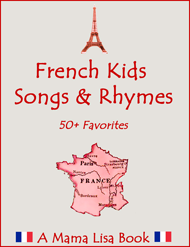
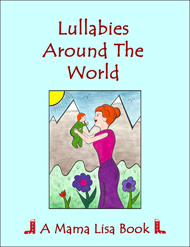


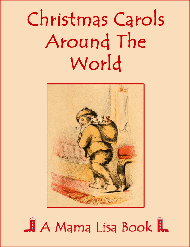
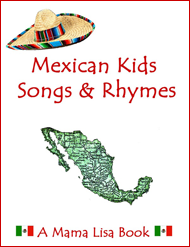



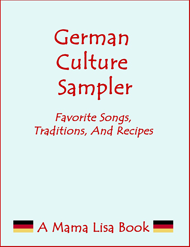







January 15th, 2018 at 6:16 pm
Excellent post! Love the illustrations.
February 10th, 2019 at 8:46 am
We play this in India as well. In Tamil Nadu with 5 stones
September 12th, 2019 at 4:28 pm
It’s played in India under the names ‘paanch pate’ meaning 5 stones in hindi, ‘anju kal’ which also means the same in tamil. Its also played in Singapore.
September 12th, 2019 at 5:04 pm
Thanks for sharing that info Rajani! Is there anything that’s said during the game in India or Singapore?
July 18th, 2020 at 10:52 am
Hi Lisa,
The game is called ‘truppan’ in Kashmir (northern India)
August 20th, 2020 at 2:14 pm
it is also played in TAMILNADU [India] with the name of ‘kallanga’.
September 9th, 2020 at 12:44 am
It’s played in Malaysia too and in Malay language it’s called Batu Seremban.
August 22nd, 2021 at 12:39 pm
in malaysia it is known as batu seremban or batu sermbat
January 21st, 2022 at 10:01 am
We used to call it ‘Dibs’ when I was a child in the early 1960s in Southampton, UK. The five stones were pastel-coloured, chalk cubes with sides of about 1cm.
July 22nd, 2022 at 3:14 pm
As a kid always played this game with tamarind seeds, Loved this blog about this game.
Recently bought this game for my nephew, to introduce him to the ancient games that we played as a kid called kallanga. Have a look at this game from kreeda games https://www.mozaicq.com/p/kreeda-five-stones
March 3rd, 2024 at 8:24 pm
I learned that this game was originally played by throwing the bones or objects in the air and try to see how many can land on the back of your hand. Have you ever heard of this version? I’d assume that this version would be older than the one you describe. Do you have any references to where the version you mentioned has an origin date? Just trying to compare the two versions to see which one came about first and when the other one was invented.
September 29th, 2024 at 8:47 pm
We, Kurds of Northern Kurdistan (Kurmanji), also have this knucklebones game, which is played with actual knucklebones of sheep – we should more accurately say that it was played back in the day. My parents still talk about it and it is still played in rural areas. We call it “kab” which means knucklebones. However these games are two separate games in our culture. Kab (knucklebones) is a kind of hazard / chance game where you throw the bone much like a dice and on which part it lands is what matters. We say “Mîr” (Prince) or “Ker” (Donkey) depending on where it lands. Mîr is the winner of course.
The other stone / pebble game is a game made up of stages getting ever difficult as it progresses. And these stages have different names, it is like going to the market to exchange goods, the setup of names is like that. We call it şeşik (the group of 6 or 6 stones) but we play it with five stones :) Others call it different names. There were country names and styles, so I wanted to add some detail to it.
January 7th, 2025 at 10:54 pm
I watched gong-gi and they throw the pebbles on the back of their hands. In what cultures is this played?
I just read how in my country- Estonia they also used to play throwing a stone/ stick /(or even cheese? idk) on the back of their hand.